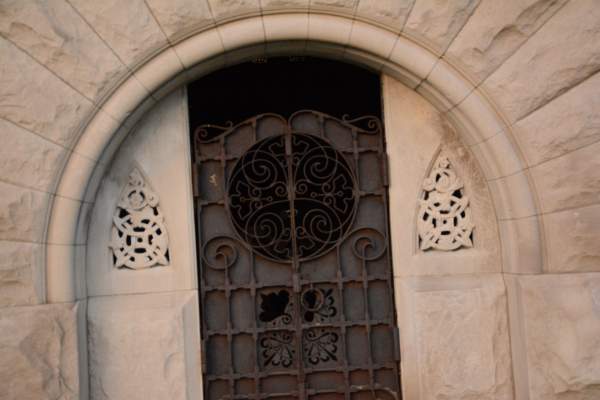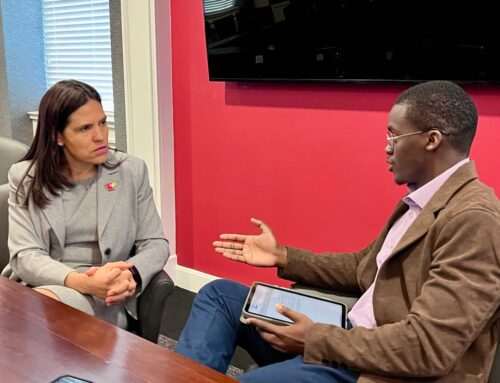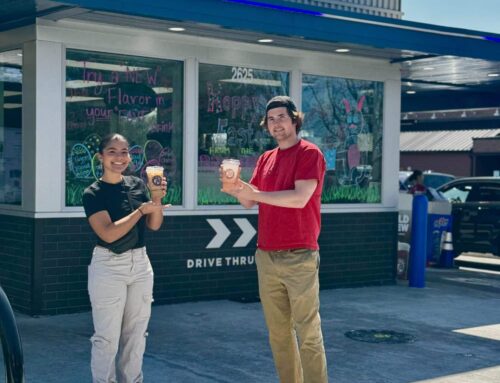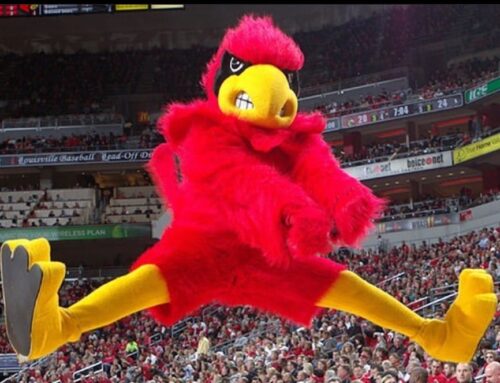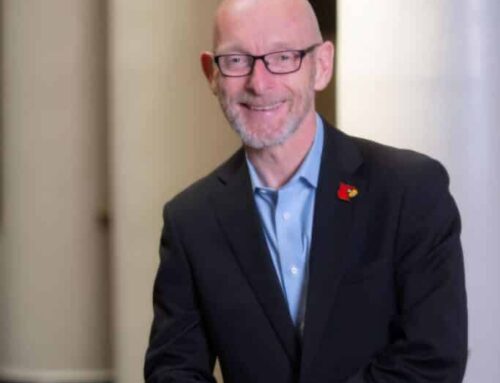Laura Valentine has never been scared of graveyards.
Valentine grew up near Zachary Taylor National Cemetery, a well-kept veterans cemetery with a US president buried in it. Now a senior anthropology major at U of L, she continues to spend a lot of time around the dead, but not as part of her degree. Valentine is a member of Friends of Eastern Cemetery, an organziation dedicated to the restoration of the much maligned and once disturbingly unkempt cemetery.
“I dig cemeteries. I think they’re cool places. They’re quiet. They’re peaceful,” she said. “The first time I ever saw (Eastern Cemetery)…The grass out there was — and I’m not tall, I’m like 5’2”— above waist-high on me…People had been going in there for years and just dumping their trash, sitting in the woods and just having little parties.”
Homeless people burned cemetery records for warmth. Free-roaming dogs used the lot as a toilet. Vandals poured out cremains and sold the bronze urns for cash.
“It was this wreckage of a place, but there’s something uniquely beautiful about it,” said Valentine.
The 30-acre tract of land was first used as a cemetery in the 1840s. It was then owned by the Fourth Street Methodist Church, and was the first cemetery in Louisville to bury both black people and white people, though still not in the same sections. Though progressive in its time, the policy later solicited a horrific injustice.
In June 1989, the company that operated Eastern Cemetery, along with two other local cemeteries, had a criminial investigation filed against them for allegedly reusing graves. Longtime forensic archaeologist Dr. Phil DiBlasi, also a U of L professor, was asked by the attorney general to step in as the archaeologist on the case. A judge ruled that an archaeologist must be present during all exhumations or burials from then on.
DiBlasi estimates there were about 80,000 bodies buried on a lot that should only hold 25,000. Black families suffered in particular, he said, because they did not tend to visit graves after the burial, making the graves of their relatives easy targets for frequent reburials.
Basic cemetery ettiquette says not to step on people’s graves, but that’s a difficult task at Eastern, where plots are tightly packed, and not always in even rows. The task becomes virtually impossible when one realizes most graves there are unmarked.
Today, there are roughly 9,000 prepurchased graves at the cemetery, but there is not enough room on the lot to support them without resorting to reburials.
“Believe it or not, there is no state law in Kentucky saying that I can’t dig through your grandmother and put somebody else there,” DiBlasi said. “The law they charged them with violating is one that says that if you buy a grave, you own it forever, and if somebody sells it and then reuses it, they’re violating a property law.”
Gesturing nonchalantly to a thin, black casket leaning up against the wall in his office, Di Blasi said the caskets of the 1800s were narrower than they are now. As a result, modern gravediggers may not know how wide a grave can be without breaching another plot.
The company responsible for the cemetery has ceased to hold meetings, and there has since been no legal owner or caretaker for the property and the bodies that rest there. This is how DeBlasi came to care for the remains of over 500 people. He now waits for their relatives to claim them.
He is also responsible for the cemetery records, which DiBlasi’s students painstakingly scan and transcribe, so people who want to find specific graves can do so digitally.
But for more than 20 years, almost no one was taking care of the land itself. That is where the Friends of Eastern Cemetery come in.
Changing fate
While interning for public radio station WFPL in 2013, Laura Valentine met Andy Harpole, a citizen concerned about the state of the cemetery. After an interview at his home, and participation in one of the cemetery’s weekly cleanup days, Valentine discovered she was just too passionate about the project to objectively write a story about it.
“The more the plot thickens, the more you realize you’re a part of it,” Valentine said. “That’s kind of how it happens for a lot of us: you get involved, you keep coming out every week… I was just going to be an independent journalist, but I realized that I’m kind of a part of this now. I thought I could put it on hold and finish the story, but I think I knew from the beginning that this was going to be my thing.”
Valentine has since been instrumental in recruiting volunteers for the project.
“We have the best, strongest, most passionate volunteer base I have ever had the pleasure of working with,” she said.
Standing upright
Friends of Eastern Cemetery find headstones that have fallen over or been knocked over intentionally. When they do, they make an effort to set them upright again, using techniques a monument conservation specialist taught to them. First, they must dig out the entire headstone.
“Sometimes you’ll be digging, trying to right a headstone, and you’ll dig up parts of another headstone … We ask, ‘Who does this belong to? Where does it go?’ so we put them in a pile with the other broken headstones,” said Valentine. “We know we want to do a memorial to all of the people buried there who don’t have a headstone, but we’re not sure how we’re gonna do it yet.”
“I try to come out when I can. It’s not every week, but I do it when I can,” graduate public history major Matt Holdzkom said, while righting a headstone at a volunteer day in early October. “I’ve done a lot of this, trying to level stones. They selected this corner of the cemetery to try to straighten up all the stones so it looks nice.”
Holdzkom said he got involved after meeting Valentine at the Kentucky Science Center. The fact that he already knew someone who was working on the project made volunteering seem less intimidating.
“I heard about the cemetery and I thought it was a such shame the city was ignoring it, so I just do what I can,” he said.
Making their names known
Sociology major James El-Mallakh typically does edgework with a weedwhacker at the cemetery.
“Cemeteries are a part of our cultural past,” he said, “and the care with which we treat the dead is uniquely human. Helping to restore Eastern Cemetery shows we care about that past and that aspect of ourselves.”
Valentine was also instrumental in bringing El-Mallakh into the fold:
“Valentine is the hardest worker there,” he said “She really takes everything into her own hands and she’s super passionate about the project. When she told me about it, I told her I’d come and help out. I’ve been coming back ever since.”
Olivia Maison-McIntosh is a psychology and marketing double major. She isn’t able to help as much since school started, but when she can, she clears away brush and uses a cleaning agent called D-2 on gravestones, which helps to whiten them while preserving the integrity of the limestone.
“I read an article in the LEO about a year ago, and I passed the volunteer sign about a week after one of my friends (died) over the summer, so it was a good distraction to volunteer and clear my head,” she said. “Even if we can’t make it perfect … The very least we can do is make it beautiful and make their names known again.”

